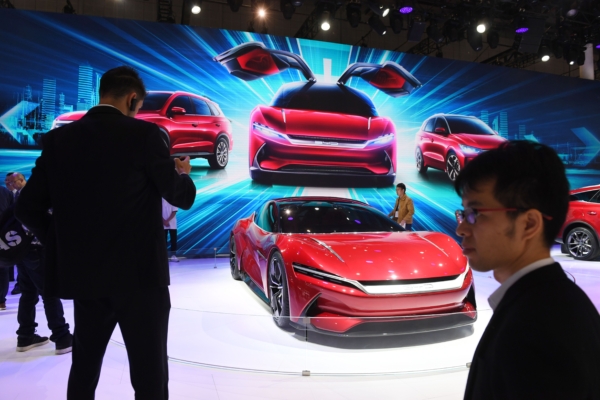The Chinese authorities have recently adjusted the consumption tax policy on “ultra-luxury small cars”, significantly lowering the starting price from 1.3 million RMB to 900,000 RMB and for the first time including new energy vehicle models such as pure electric and fuel cell vehicles in the taxable range. Industry insiders point out that this policy change reflects the decreasing consumption willingness of high net worth individuals and the sluggish demand for high-end cars in the face of downward economic pressure in China, highlighting the government’s financial constraints.
According to reports from “Caijing” and “Huaxia Times”, starting from July 20th, the Ministry of Finance and the State Taxation Administration of China released a new announcement titled “Announcement on Adjusting the Consumption Tax Policy for Ultra-Luxury Small Cars”, which includes all types of power passenger vehicles and medium-duty commercial vehicles (including new energy vehicle models such as pure electric and fuel cell vehicles) with a selling price (excluding VAT) of 900,000 RMB and above into the “ultra-luxury small car” taxation scope, imposing an additional 10% consumption tax at the retail level.
Compared to the 2016 set threshold of 1.3 million RMB, this adjustment not only significantly lowers the price threshold but also significantly expands the taxable scope. Official policies state that new energy vehicle models, due to no cylinder capacity limit, will only be taxed at the retail level; while traditional fuel vehicles will continue to be taxed at both production (import) and retail levels. Market interpretations suggest that this adjustment will further squeeze the profit margins of high-priced new energy vehicles and may prompt some car manufacturers and dealers to preemptively clear existing inventory.
Industry experts generally believe that the downward adjustment of the luxury car tax threshold accurately captures the continuing downward trend in actual transaction prices in China’s high-end automobile market in recent years.
After the official policy announcement, a wave of buying frenzy was observed in the Chinese market in the short term. Brands such as Porsche, Mercedes-Benz, and BMW experienced a phenomenon where consumers rushed to purchase, with models like the Porsche 911 and Panamera being particularly in high demand. Sales staff have stated, “Buying a few days later will cost tens of thousands more.”
However, behind this wave of purchases lies more prominently the concerns of potential car buyers about the increasing burden of future consumption taxes rather than a genuine rebound in confidence in the high-end consumption market.
According to data from the China Automobile Dealers Association, in the first half of this year, the sales volume of new cars priced above 900,000 RMB was approximately 37,000 units, with new energy vehicle models accounting for only 214 units and fuel cell vehicle sales hanging at zero. Insiders point out that the biggest impact of this policy adjustment is on brands like Porsche and Mercedes-Benz S-Class, which have both high sales volume and brand premiums.
At the same time, some ultra-luxury brands have been forced to substantially reduce prices to survive. For example, the Maserati Grecale was originally priced at over 650,000 RMB, but some dealerships dropped the selling price to as low as 388,800 RMB to clear stock, depicting the true predicament of their sales volume.
According to the China Association of Automobile Manufacturers statistics, in the first five months of 2025, Maserati’s cumulative sales in China were only 384 units, a significant drop year-on-year. Bentley, Rolls-Royce, Ferrari, Lamborghini and other brands also experienced notable declines in sales in China during the same period, with decreases exceeding 20%.
In the eyes of Cui Dongshu, Secretary-General of the China Association of Automobile Manufacturers, the overall weakening of super luxury brands reflects a temporary slowdown in purchasing power of the ultra-high-end consumption group.
While officials claim that lowering the “luxury car tax” threshold is aimed at “guiding rational consumption”, industry insiders widely believe that the rationale behind this policy underscores the dual reality of China’s weak growth in fiscal revenue and declining high-end consumption capabilities. As China’s third-largest tax, official data shows a mere 1.6% revenue growth in the first five months of this year, highlighting fiscal pressures.
The luxury car market, as a barometer of China’s economic confidence and consumption capability, has become a microcosm of the changing consumption structure in present-day China. Insufficient consumer confidence and shrinking high-end demand are becoming unavoidable signals of the current economic transformation in China.

